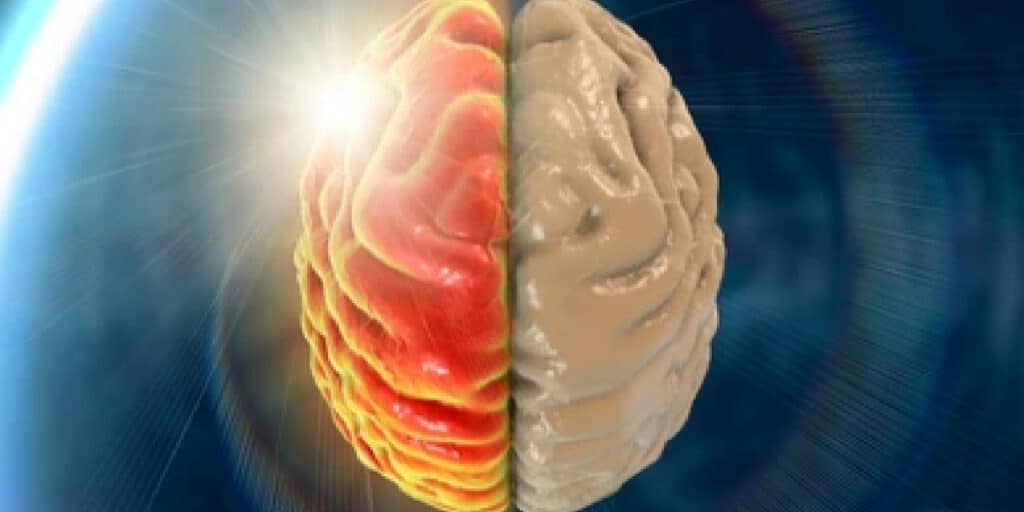Well known for its severe throbbing pain, migraines are a common health condition worldwide. But for about 20% of migraine sufferers, a neurological phenomenon known as a migraine aura will occur, and it can be quite scary, especially if you’ve never experienced it before.
Read on to learn more about migraine auras and what you can do to reduce their occurrence.
What Is a Migraine Aura?
Characterized by disturbances in vision, sensation, or speech, a migraine aura is a sensory symptom often serving as a warning sign before a migraine attack. In most cases, migraine aura symptoms start gradually and progress slowly, making episodes debilitating as they can last anywhere between 20 to 60 minutes.
There are several types of migraine aura, with the most common being:
Visual
This type occurs with visual changes that begin at the center of a person’s field of vision, then eventually move outward. Some may even experience severe symptoms during visual migraine auras like temporary blindness. Other visual symptoms include:
- Blind spots
- Tunnel vision
- Seeing sparkles or flashing lights
- Zigzagging lines
- Colored spots
Sensory
Sensory symptoms include numbness, tingling, and a pins and needles sensation. These symptoms may start in a small location and spread to other parts of the face or body.
Verbal
Changes in speech and language are less common during a migraine aura, with symptoms ranging from mumbling and slurred speech to an inability to form the right words.
What Triggers a Migraine Aura?
The cause of a migraine aura is unclear, but research suggests that it may be caused by an extra wave of electrical activity in the cerebral cortex, i.e., the largest part of the brain. This electrical activity, called cortical spreading depression, occurs in the back of the brain where many visual areas are located, causing temporary changes in the chemicals, nerves, and blood flow in the brain.
Moreover, there are several suspected triggers of a migraine aura, which include:
- Stress and anxiety
- Certain foods and medications
- Strong smells, e.g., perfume, smoke, gasoline
- Alcohol and caffeine consumption
- Exposure to bright lights
- Lack of sleep
- Hormonal fluctuations, e.g., pregnancy, menstruation, oral contraceptives
- Weather changes or barometric pressure changes
Can a Migraine Aura Occur Without a Headache?

In short, yes, a migraine aura can occur without a headache. This is known as a silent migraine, and although a person who experiences this kind of migraine won’t feel pain, they may experience other uncomfortable symptoms like nausea and light sensitivity.
Additionally, migraines that occur without a headache may sometimes be diagnosed as seizures and strokes as the symptoms tend to overlap. You should seek immediate medical attention if you experience the following symptoms:
- An aura that persists for more than 60 minutes
- Sudden sensory disturbances
- Confusion or loss of consciousness
- Weakness on one side of the body
How Can I Treat a Migraine Aura?
While there isn’t a surefire way to prevent a migraine aura, there are several things you can do to reduce the length, severity, and frequency of your attacks.
Consider Medication
Medications work best when taken at the first sign of an oncoming migraine. Be sure to talk to your primary care physician before starting a new medication. Medications to treat migraines with or without aura include but are not limited to:
- Pain relievers – Aspirin or ibuprofen are a few examples of over-the-counter pain relievers used to treat a migraine aura. Avoid taking them too frequently as they can cause medication-overuse headaches.
- Triptans – Administered through a shot, nasal spray, or pill, triptans are prescription drugs used to treat migraines as they block pain pathways in the brain.
- Lasmiditan (Reyvow) – This is an oral tablet treatment approved for migraines with or without aura. In drug trials, lasmiditan improved headache pain.
- Preventative medicines – These are aimed at reducing how often you get a migraine headache. Some options include antidepressants, botox injections, blood pressure-lowering medications, and anti-seizure drugs.
Make Some Lifestyle Changes
For those looking to avoid medication, changes in lifestyle may be a more attractive approach to migraine relief. According to the American Migraine Foundation, there are five lifestyle changes you can make to reduce the severity and frequency of migraines with or without aura.
Follow the mnemonic SEEDS to reduce the environmental triggers that may be contributing to your migraine attacks: sleep, eat, exercise, diary, and stress.
Sleep consistently
Sleep is an important part of migraine management as poor sleep can trigger a migraine attack. Aim to keep your bedtime the same each day, along with the number of hours you sleep and the time you wake up. Additionally, be mindful of your sleep hygiene, i.e., the habits and practices that help you sleep well. Turning off electronic devices two hours before bed, employing a relaxing routine, and keeping your room dark and cool are a few ways to practice good sleep hygiene.
Eat well
Similar to sleep, you should also aim to keep your meals consistent by eating regularly throughout the day. To prevent dips in blood sugar that may trigger a migraine attack, focus on foods high in protein, fiber, and healthy fats rather than processed foods like fast food or premade meals. As for hydration, be sure to drink plenty of water to account for your body’s loss of water through urination and sweat; the recommendation is eight 8-ounce glasses of water a day.
Exercise regularly
Research shows that exercise can reduce the frequency, duration, and severity of migraine attacks. This is due to the body’s release of endorphins during exercise, which reduces stress and pain. The recommended amount of exercise is 30 to 50 minutes of moderate activity, three to five times a week. Walking, swimming, and cycling are excellent ways to induce endorphins.
Keep a migraine diary
A migraine diary is a tool to help you identify patterns that could suggest your migraine auras are chronic, episodic, or even hormonal. Keeping a migraine diary can also guide your doctor to appropriate treatments to prevent future migraine auras.
Find healthy stress relievers
From work deadlines to family responsibilities, stress is an unavoidable part of life. But there are ways to cope. To decrease your stress, find activities that bring you pleasure like listening to music, reading a book, or playing a sport. Additionally, you can practice meditation and deep breathing exercises which can calm the nervous system, reduce stress and lower your chances of a migraine attack.
Have You Experienced a Migraine Aura?
Tell us your story in the comments below!
What Migraine Topics Should We Cover Next?
Email us your ideas at info@painresource.com
Join the Pain Resource Community
Did you know Pain Resource has different groups for different conditions? Connect with others who share the same condition as you here.





Ahhhh, I get these MONTHLY. When the aura shows up, you know it’s about to get BAD.